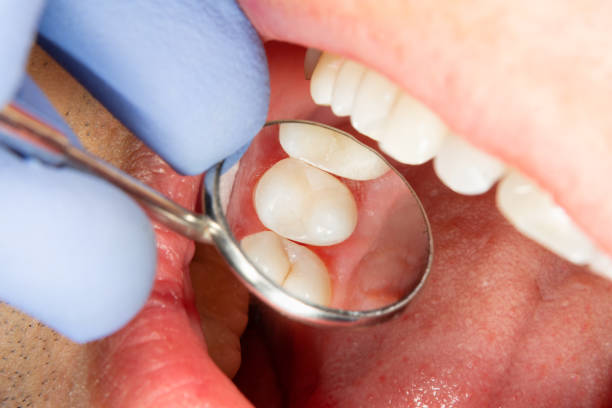The sensitivity of each tooth in our mouths entirely depends on the location and purpose of the tooth. So when a molar, which has around 45 nerve endings in total, experiences a crack, then it can be excruciatingly painful.
While a cracked molar might feel more painful than a cracked incisor (the front teeth), the question of whether or not either tooth needs to be pulled is ultimately up to your dentist.

Different Types Of Cracks
A tooth fracture is all around painful, regardless of how long and deep a crack might be. A dentist will be able to decide whether a tooth fracture can be repaired or if it needs to be extracted.
To make this decision, dentists silo tooth fractures into five categories:
- Craze Lines – This type of crack occurs in the tooth’s enamel and appears very faintly to the naked eye. Usually, these lines don’t cause pain or need major dental treatment, but should be monitored to ensure the dentin of your tooth isn’t damaged. A tooth with just craze lines does not need to be pulled.
- Fractured Cusps – This type of break is defined by the top, or part of the tooth used to chew food, breaking off. Pain isn’t always present with these cracks, but you will notice the affected tooth is more sensitive to different temperatures. The solution for this crack usually involves a new filling or crown placement. A root canal is sometimes necessary for this type of tooth fracture, but seldom does the tooth need to be pulled.
- Cracked Teeth – A cracked tooth is painful and visible. This incomplete crack can exist where your teeth are exposed or it can occur below the gum line. As unfortunate as this type of damage can be, there’s a good chance your tooth won’t need to be pulled. The dentist will need to perform a root canal as soon as possible to increase the chance of it being saved.
- Split Teeth – This is a crack that exists from the surface of the tooth to the root beneath the gum line. Because this type of crack is quite large, it will be incredibly challenging to save part of the tooth let alone the entire tooth. If part of the tooth remains after an extraction, it will need a root canal and a new crown to be fully functional. Partial or total tooth extraction is almost always necessary in these cases.
- Vertical Root Fractures – Because this type of crack is internal and affects the root of the tooth, extraction is usually the only option to protect your remaining teeth and gums. Unlike a split tooth, this type of fracture can go undetected for quite some time. If you suspect the root of your tooth is fractured, then you need to make a dental appointment as soon as possible.
Similar to a tooth being knocked out of place completely, you’ll need to see a dental professional as soon as possible to repair your cracked tooth. As more time passes, the chances of your tooth being repaired or saved steadily decrease.
Visit Our Dentist In Naperville
If you’re looking for an emergency dental clinic that provides cracked tooth repair services and extractions, then look no further than Naperville Commons Dental. Our practice is always ready to help you with any urgent dental issues you face.
Your oral health and time are of the utmost importance to us. Please call us to get scheduled for an emergency dental visit as soon as possible.



